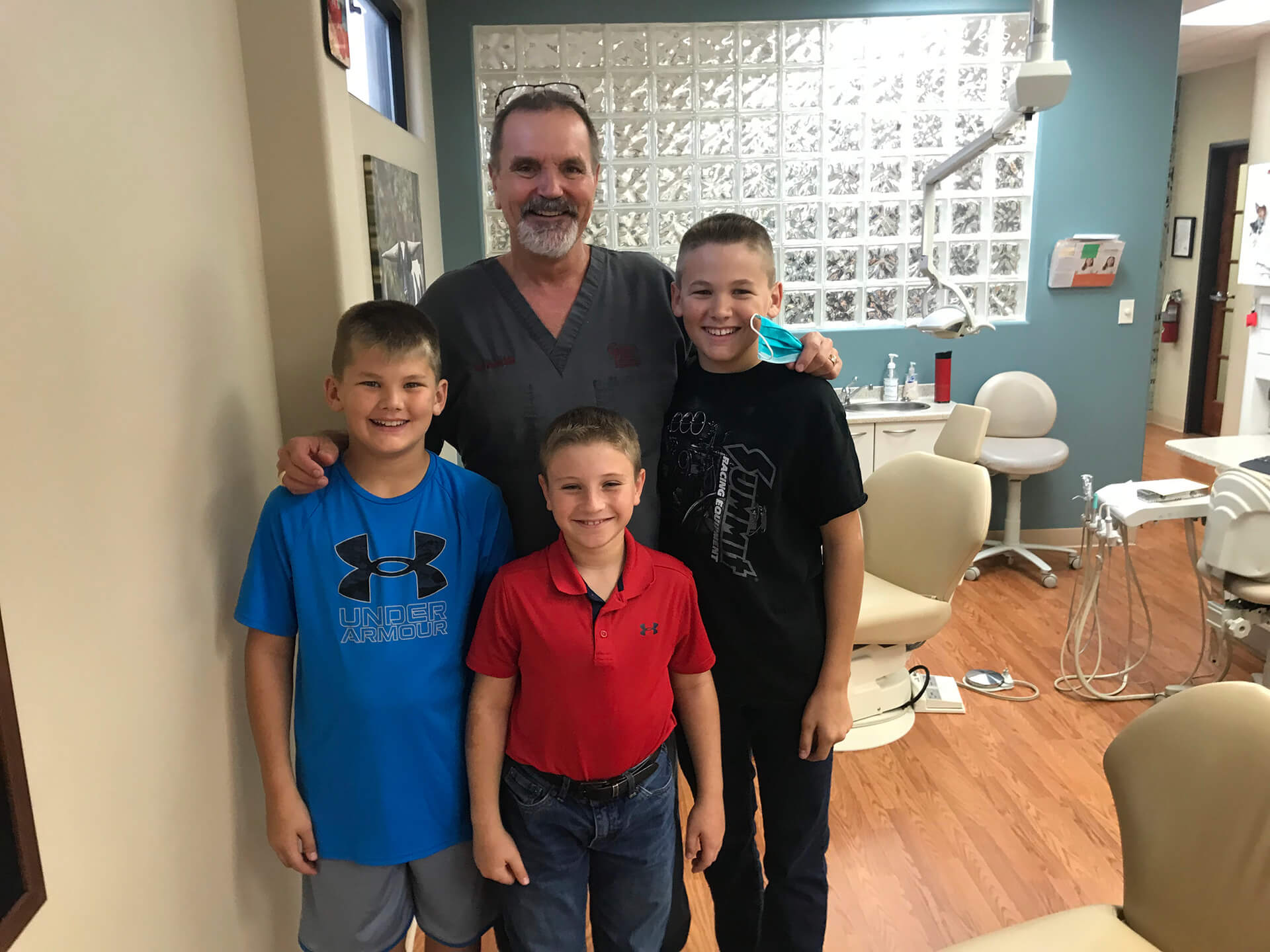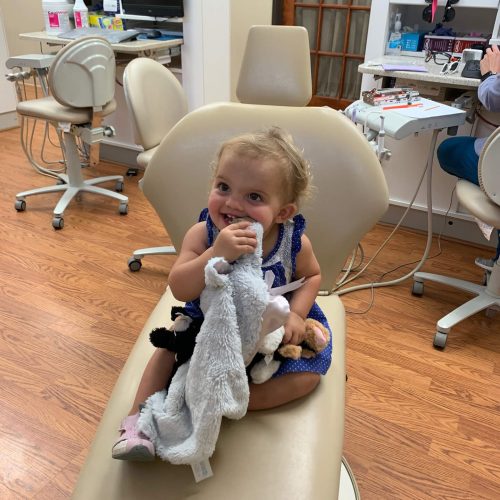Orthodontics


When Should My Child Get Braces?
We see parents every day who are confused as to when their child should begin orthodontic treatment. Although the recommendation is that children be evaluated orthodontically at age 7, that does not mean that treatment should necessarily begin at that age. Although there may be tremendous differences between offices as to when orthodontics should begin or as to whether orthodontics is needed at all, following are some common sense guidelines developed over 25 years of practice of Pediatric Dentistry that we follow here at Cedar Park Pediatric Dentistry that may be helpful.
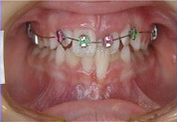
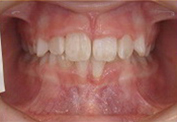
Crossbites
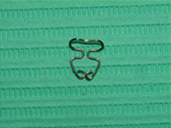
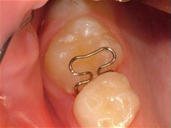
Ectopic eruption
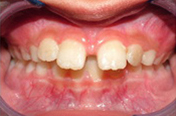
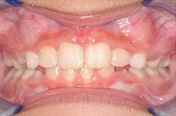
Overbites
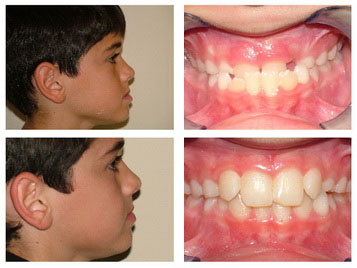
Underbites

Habits
Probably the most confusing aspect of “early treatment” for parents involves recommendations to align the front teeth for children ages 7-10 if they do not erupt straight. As a general rule, this is not something that we recommend unless 1) there is some reason that the parent feels that it would benefit the child from a self esteem standpoint or, 2) there is a strong likelihood that alignment at this age would prevent or tremendously simplify braces at a later age. As a general rule, early crowding is managed by selective removal of baby teeth to improve alignment during growth and development and simplify future braces. Final braces, if needed, then occur at age 11-14 after all permanent teeth have erupted.
Our office provides complimentary orthodontic evaluations. If you have any questions, feel free to give us call, schedule an appointment, and we’ll sit down and discuss your questions and any recommendations that we feel might be appropriate for your child.
Early Orthodontic Treatment
Most parents are concerned with the “need” for braces at a very early age. What should be done early? When is the best time for treatment? How can early treatment be accomplished? Why not wait for all the permanent teeth to come in? Dr. Vasut addresses and answers these questions daily in his practice. In many children, waiting for the permanent teeth to erupt is the best course of treatment. However, some orthodontic problems identified and treated early can keep them from being fully expressed and tremendously simplify full orthodontic treatment later on. Early treatment provides the opportunity to: improve eruption of teeth, eliminate crowding of teeth, correct abnormal jaw widths, influence jaw growth in a positive direction, improve a child’s ability to breath through their nose, improve esthetics and self-esteem, simplify and shorten treatment time for full braces at a later time, and provide patients and parents with peace of mind. Waiting for full eruption of the permanent teeth and full expression of skeletal and/or dental bite problems can often not be the best strategy. In many children, it makes sense to correct problems early and keep oral and facial growth and development on a normal course. Dr. Vasut will address early treatment with you if appropriate for your child.
Orthodontic First Visit
We are always excited about meeting new patients during their first visit to our office. Your initial appointment will consist of a thorough examination and a discussion of potential treatment options. This important 30-minute visit will give us insight into your orthodontic needs. We know your time is valuable, so to expedite treatment, we may also reserve time following the exam for diagnostic records. The records include X-rays, photos and impressions for study models and are necessary for developing the appropriate treatment plan. This additional appointment will last approximately one hour and can be scheduled at your convenience.
During the initial examination for each patient, we will address the following questions that cover the basics of orthodontic treatment. We encourage you to ask questions as well.
- Is there a condition that orthodontics can address?
- Is treatment needed now, or should treatment be delayed until appropriate growth, tooth eruption, or other factors have occurred?
- What treatment procedures will be used to correct the problem?
- Do any permanent teeth need to be removed?
- How long will treatment take?
- How much will it cost?
- What are my payment options?
Please assist us by providing the following information at the time of your first visit:
- Any panoramic X-ray taken within the past six months.
- If you have orthodontic insurance, bring your insurance card or your insurance company contact information. By providing this information at the first visit, we will be able to give you an estimate of what costs your insurance may cover.
Why the Differential Straight-Arch Technique?
All braces are not the same.
The Differential Straight-Arch Technique will be used for your treatment. This fixed appliance uses light traction force in a continuous fashion to accomplish tooth movement. This is in contrast to the start and stop nature of other methods. This technique is also called the Tip-Edge System® which allows simultaneous movement of all teeth toward their final positions from the very start of treatment. There are several benefits related to the use of lighter force and continuous action.
The major advantages of the Differential Straight-Arch Technique are:
No headgear required: Head and neck straps worn outside of the mouth are eliminated.
Elastics: It is basically easier to wear elastics inside the mouth than to wear a headgear.
Longer time between appointments and fewer visits overall: Routinely, appointments are scheduled every six weeks rather than every three or four weeks as required with other methods. This is made possible because the appliance works continuously, yet overall treatment time is not increased.
Less discomfort: Much lighter forces are used throughout treatment. Smaller wires and smaller elastic forces are used.
Improved Appearance: This system uses small brackets.
Patient care made easier: The bracket, wires and bands used in this system make brushing and flossing easier to ensure good oral hygiene.
So, with this new and improved method and your cooperation you can look forward to having great looking teeth! Good Luck!
Brushing & Flossing
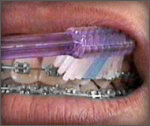
Brushing
Use a toothbrush with soft bristles and a small strip of fluoride toothpaste. When you brush your teeth, move the brush in small, circular motions to reach food particles that may be under your gum line. Hold the toothbrush at an angle and brush slowly and carefully, covering all areas between teeth, between braces and the surface of each tooth. It will take you several minutes to thoroughly brush your teeth. Brush up on the lower teeth, down on the upper teeth and the outside, inside and chewing surface of your front and back teeth. Brush your tongue and the roof of your mouth before you rinse.
Especially during orthodontic treatment, brush your teeth four times daily to avoid the accumulation of food particles in your teeth and braces:
- In the morning after breakfast
- After lunch or right after school
- After supper
- At bedtime
You will need to replace your toothbrush more often due to your appliances. As soon as the bristles start to wear down or fray, replace your toothbrush with a new one. It may be difficult for your toothbrush to reach some areas under your archwire. Do not swallow any toothpaste; rinse your mouth thoroughly with water after you finish brushing. It is important to floss and use an antibacterial mouthwash and fluoride treatment throughout your orthodontic treatment and beyond for optimal oral hygiene.
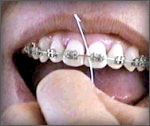
Flossing
For areas between the teeth that a toothbrush can’t reach, use dental floss to remove food particles and plaque. Flossing takes more time and patience when you are wearing braces, but it is important to floss your teeth every day.
Use the reusable floss threader provided by our office to floss under your archwire daily. Pull a small length of floss from the dispenser through the threader and slide it up and down along the front of each tooth. You will be able to feel when the tooth is clean and hear the squeak of the floss against your clean teeth. Use care around your archwire and do not floss too forcefully around it or put too much pressure on it. After you floss between your archwire and braces, floss between your other teeth and gums.
If you are flossing without the floss threader, pull a small length of floss from the dispenser. Wrap the ends of the floss tightly around your middle fingers. Guide the floss between all teeth to the gum line, pulling out food particles or plaque. Unwrap clean floss from around your fingers as you go, so that you have used the floss from beginning to end when you finish. Floss behind all of your back teeth.
Floss at night to make sure your teeth are clean before you go to bed. When you first begin flossing around your braces, your gums may bleed a little. If the bleeding does not go away after the first few times, inform a staff member at your next appointment.
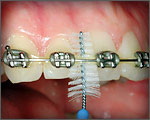
Interdental Toothbrush
A Proxabrush is an interdental (between the teeth) toothbrush that you may use to clean underneath and around your wires and braces. Use the Proxabrush gently to avoid damaging your wires. The Proxabrush will help you to clean your braces while maintaining healthy teeth and gums.
Bite Problems
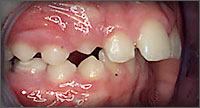
Upper Front Teeth Protrusion
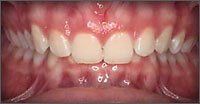
Overbite
The upper front teeth extend out over the lower front teeth, sometimes causing the lower front teeth to bite into the roof of the mouth. Deep overbites lead to crowding and wearing of the lower, front teeth.


Crossbite
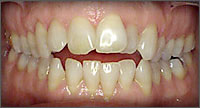
Openbite
Other Problems
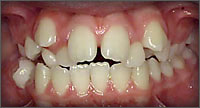
Crowding
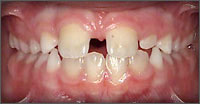
Spacing
Dental midlines not matched
Emergency Information
What to do in case of emergency
Call our office as soon as possible if you break or loosen any of your appliances. Please do not come directly to the office – by calling us, you will allow us to create a time to see you. Even if you have a regular appointment scheduled, call us immediately to notify us if you need an appliance repaired.
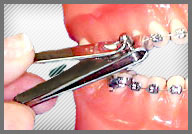
Loose brackets or bands
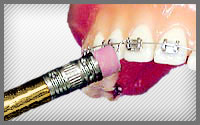
Wire irritations
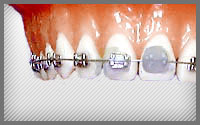
Lost separators
Discomfort with orthodontic treatment
During the first week after your braces are in place and routine adjustments are complete, you will likely feel some pain, soreness or discomfort. You may take acetaminophen or other non-aspirin pain relievers while you adjust to your new braces. A warm wash cloth or heating pad may reduce the soreness in your jaws.
Foods to Avoid
For most situations, common sense will tell you what to avoid. Hard foods, sticky foods and foods high in sugar must be avoided. Hard foods can break or damage wires and brackets. Sticky foods can get caught between brackets and wires. Minimize sugary foods; they cause tooth decay and related problems. Nail biting, pencil and pen chewing and chewing on foreign objects should be avoided.
- Gum (sugar-free or regular)
- Licorice
- Sugar Daddies
- Toffee
- Tootsie Rolls
- Caramels
- Starburst
- Ice
- Nuts
- Hard taco shells
- French bread crust/rolls
- Corn on the cob
- Apples and carrots (unless cut into small pieces)
- Bagels
- Chips
- Jolly Ranchers
- Pizza crust
- Uncooked carrots (unless cut)
- Cake
- Ice Cream
- Cookies
- Pie
- Candy
- Soda
- Sweetened tea
- Gatorade
- Kool-Aid
- Drinks with sugar
It’s important to regularly check your braces for bent or loose wires and brackets. In the event of a loose/broken wire or bracket, call our office immediately to arrange an appointment for repair.
We love hearing from our amazing patients.
